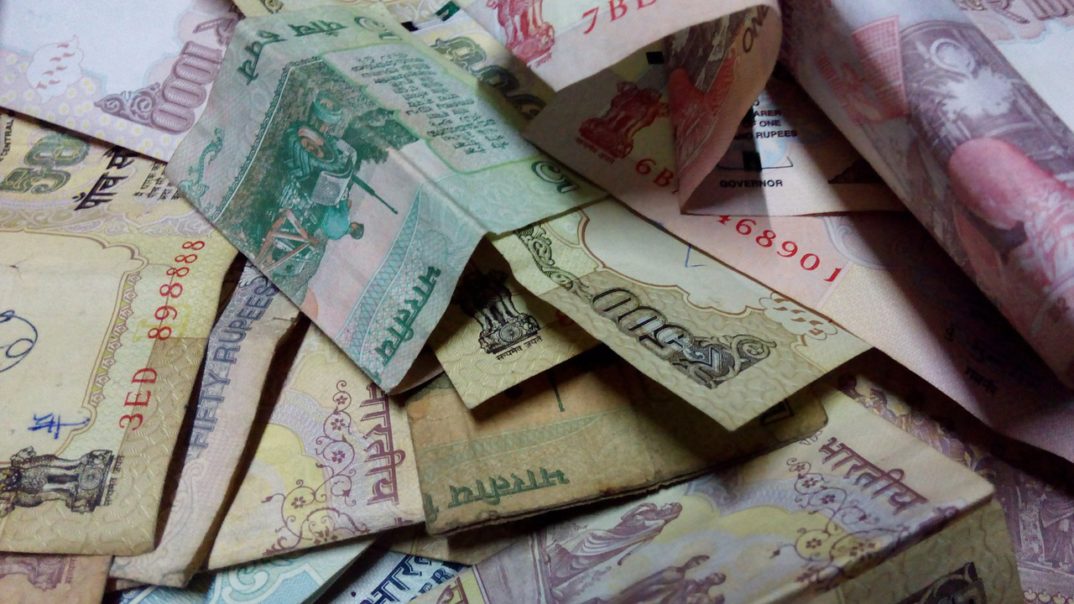A National Cash Crisis in India
Two weeks ago, the Indian Prime Minister, Narendra Modi, came on the evening news and made an announcement that would send shocks through the country. In the unscheduled televised address, Modi informed the public that in four hours, 500 and 1,000 rupee notes would no longer be legal tender. Two details of this startling law: first, people may deposit or change their old ₹500 and ₹1,000 notes in banks until December 30th, the day that new ₹500 and ₹2,000 rupee notes will be issued. Second, until then, people may exchange a small sum of old cash into legal tender of smaller denominations at banks—three days ago this amount was reduced from ₹4,500 to ₹2,000.
The significance of this law may be emblemed in the fact that together, the ₹500 and ₹1,000 notes make up 80% of currency in circulation in the Indian economy.
The populus’ response to the morality of the law seems to be split down the line. Some consider Modi’s policy to be bold and ingenious solely because of its positive long-term consequences, while others see the harm currently inflicted upon the poor and rural as absolutely unjust and marginalizing.
Before we understand the opposing moral perspectives at hand, it would benefit us to gain some context about the Indian economy and the reasons behind why the government implemented such a seemingly absurd policy.
The Indian economy is dependent heavily on cash, as 90% of the transactions in India are conducted in paper money. Since cash is so prevalent, nearly 50% of the population does not have a bank account. The more worrying trend, however, is that those who do have bank accounts choose to store large sums of money as undeclared cash in private stores.
This undocumented cash is owned primarily by the middle and upper classes and is part of what is known as India’s “shadow economy” run on “black money” that evades taxes very effectively. Though exactly how much cash citizens are hoarding is unknown, it may be indicative that it is common practice for half the value of a real estate property transaction to be paid in cash, with buyers showing up to deals with suitcases full of ₹1,000 notes. This shadow economy is perhaps one of India’s most pressing and deep-seated issues, especially since the size of the underground economy is estimated at more than 20% of the Indian GDP.
Due to the Indian shadow economy, tax records released by the government earlier in 2016 revealed that in 2013 only 1% of the population paid any income tax at all. Since virtually none of the country pay taxes, the government has very little to spend on crucial public goods like education, health, infrastructure, and welfare programs.
In light of these problems with the Indian economy, many like the BBC correspondent Justin Rowlatt look at Modi’s decision to wipe out the ₹500 and ₹1,000 bills as ingenious since this tax evasion is what Modi’s law intends to target and eradicate. And the long-term consequences would mean creating a net benefit in Indian society in the following way:
When 80% of Indian currency became illegal with the ban of ₹500 and ₹1,000 notes, most undocumented cash holdings instantly became valueless. To retain the value of these holdings, their owners would have to comply with the details of the new law and deposit their notes in the bank either to save, or to have them be replaced with new ₹500 and ₹2,000 notes in late December. This forcefully draws Indians into the formal economy that can be taxed. Already, Finance Minister Arun Jaitley announced that Indian banks had received 3 trillion rupees (nearly $44.4 billion) in cash in the first four days of the ban. With this much money flowing into the formal economy, tax revenue will increase rapidly; thus allowing the government to spend on much needed public goods that would in turn grow the Indian economy.
In light of such favorable consequences, the move to ban the ₹500 and ₹1,000 notes seems morally sound, since it would eventually aid the poor through governmental programs and raise even the lowest standards of living. Modi said that the “temporary hardships” would be worth it in the face of justice. If looked at from this utilitarian perspective—that an act is morally permissible if it maximizes net benefit, the law creates an overall net benefit, and so must be morally laudable.
Yet, critics of the law approach the case from an entirely different perspective. Consistent with criticisms of many actions fueled by utilitarian intents, the law has been condemned for harming the minority to benefit of the majority. To be more specific, it is evident that the cash ban has marginalized and unjustly harmed the poor and rural of India.
Marginalization is a form of oppression identified by philosopher Iris Young as a process in which a demographic of lower social standing is pushed to the outer limit or edge of society and excluded from useful participation in economic, political, or social life.
Poor and rural Indians have been economically marginalized in the following ways. First, more than 50% of Indians, particularly those in rural and poor areas, do not have bank accounts, and in the recent chaos of the law, the banks claim to have no time to open accounts for them. Second, though the people were promised that they would be able to exchange their illegal bills for up to ₹2000 into cash of smaller denomination until December 30th, these smaller denomination notes never reached the banks. Thus, long lines of poor workers have formed outside banks across the country and lasted for days, now weeks.
With no cash in the hands of the poor and rural, they face almost insurmountable difficulties. First, poor consumers and suppliers conduct most of their business in cash. With the demonetization of most cash, while the urban and the wealthy can pay their way through the next few months with cards, the poor have little ways of running their small businesses, or purchasing daily essentials like food and water. Additionally, rural economies are hurting because farmers and field workers have to stand in the bank lines instead of tending to a labour intensive sowing season.
Some like Anil Sasi, the senior editor at Indian Express, see the government’s actions as extremely violative of the experiences and lives of the poor. Such a law that so clearly harms, even if in the short term, groups of Indians who have been historically marginalized only solidifies feelings of disconnect and distrust in the government. While the disenfranchisement of the poor and rural may blow over as time pases and December rolls around, there is a possibility of riot and violence, as warned by the Delhi Chief Minister Arvind Kejriwa.
The present suffering and anger of the poor and cash-dependent seems to contrast the bright future of anti-corruption and flourishing government programs that Modi has envisioned. And though it is morally sound for the government to overlook seemingly insignificant sufferings of the minorities to achieve a greater good, repeated and systematic sufferings may cause a group to become marginalized and disenfranchised within their own nation. Yet, balancing the needs and interests of the whole versus those of a minority is a precarious job for any government. In a bold and possibly rash step towards progress and reform, hopes are that the Indian government made the right decision, and achieve its aspirations even if off the backs of the oppressed.





